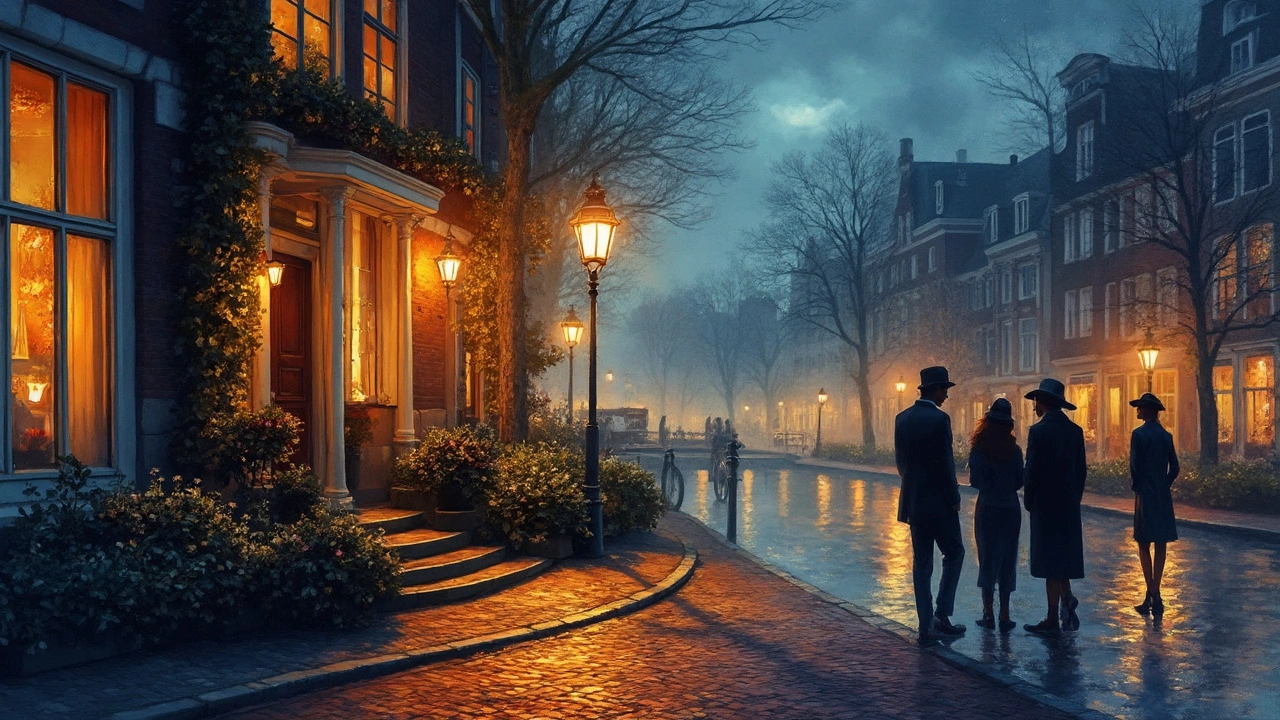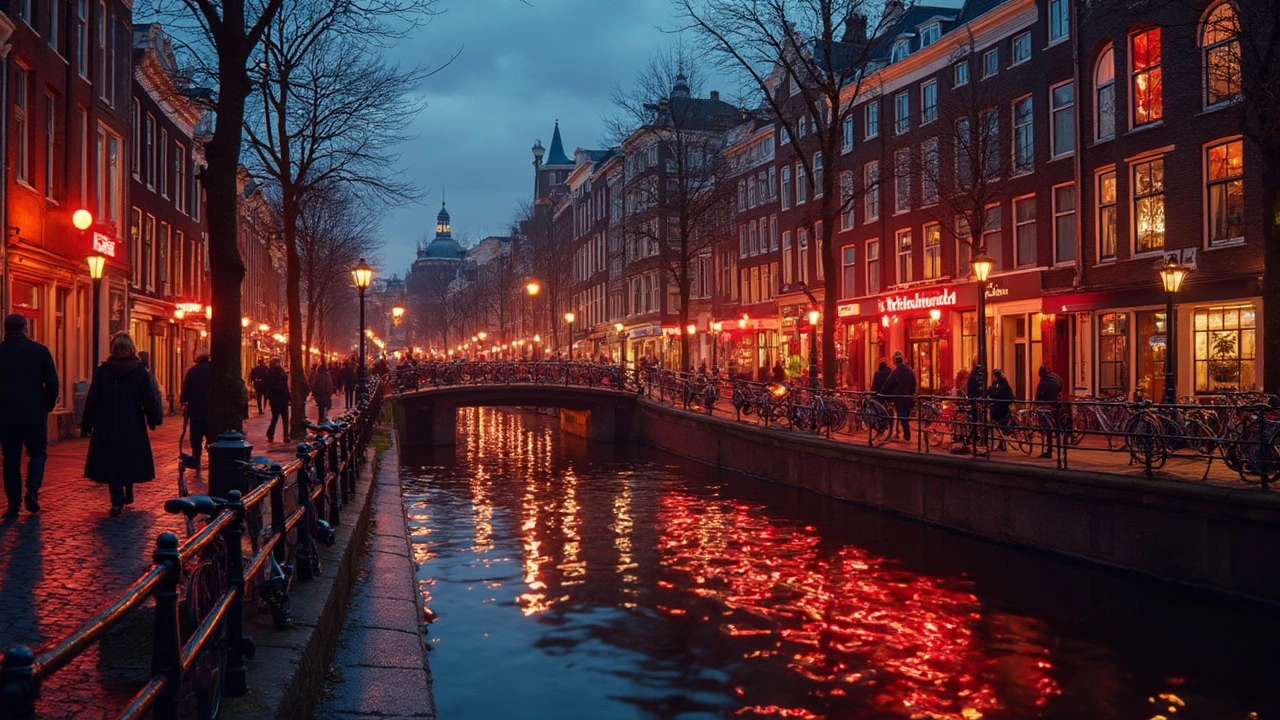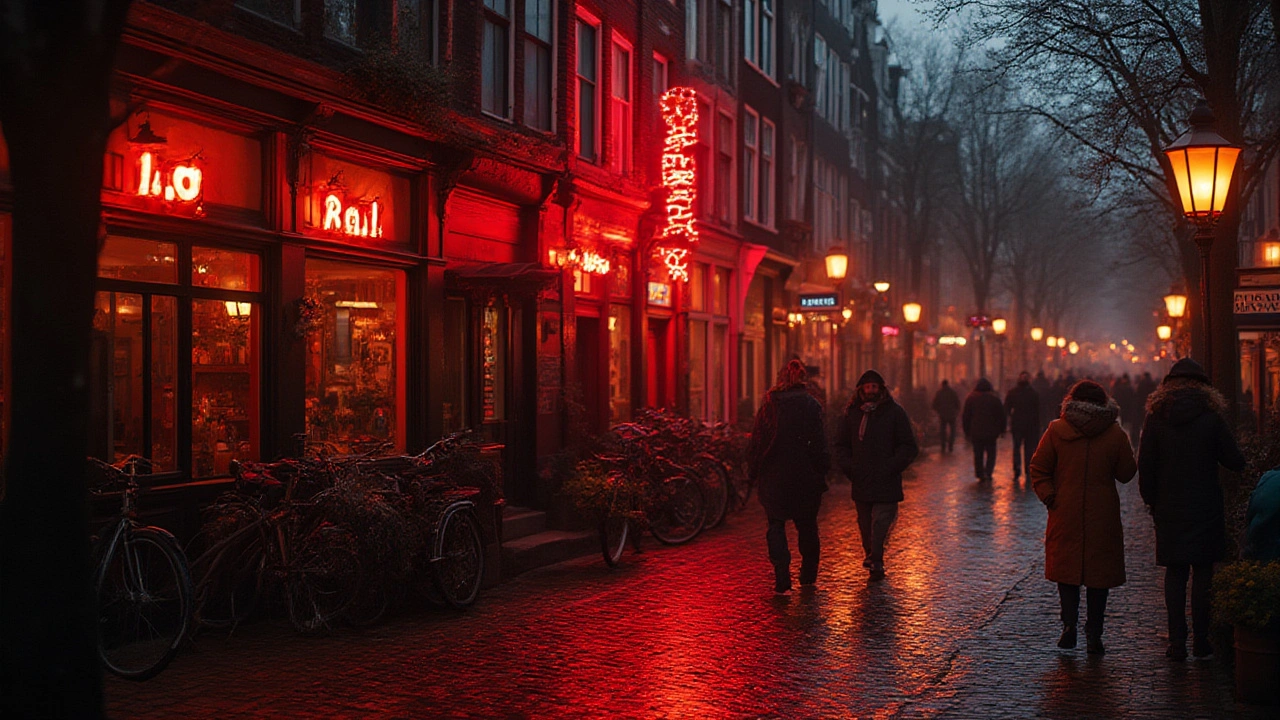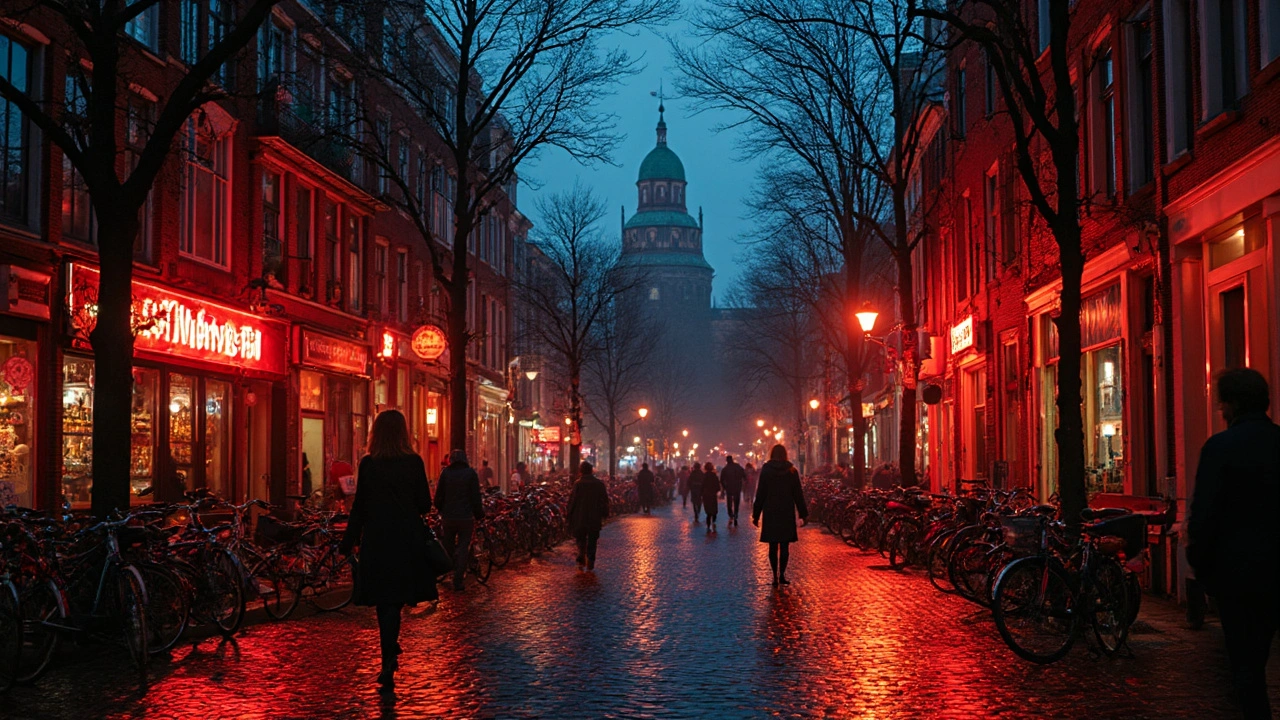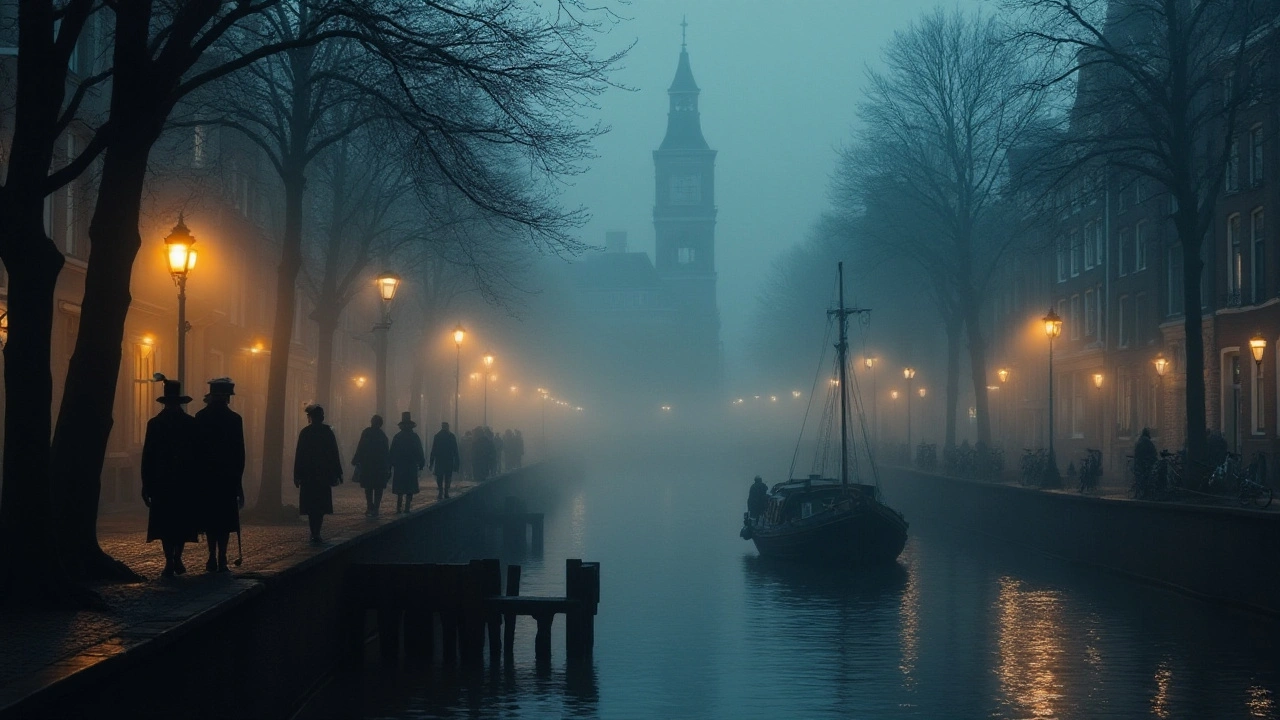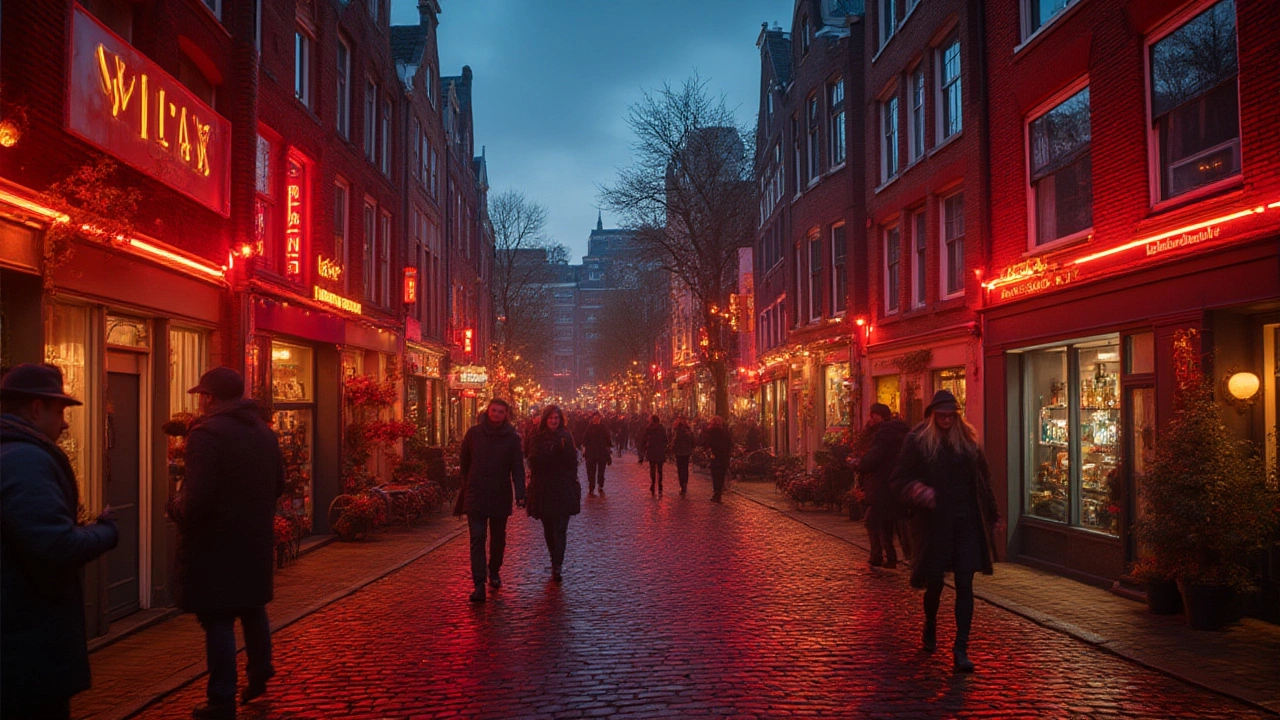
You might think you know what to expect in the Amsterdam Red Light District—neon lights, busy windows, secret alleys. But nothing prepares you for the maze of stories, vintage bars, and cultural surprises packed in De Wallen. Forget the tired clichés. The true pulse of Amsterdam’s infamous quarter sneaks up on you: a strange mix of freedom, history, and genuine local flavor.
History and Legend: Uncovering De Wallen’s Past
De Wallen, the Amsterdam Red Light District, isn’t just a magnet for the curious. It’s the city’s oldest neighborhood, sprouting up in the 1300s when Amsterdam was still a swampy port. You’re literally walking on centuries-old bricks. The Oude Kerk—the Old Church—sits right at the heart, older than most nations even. Step inside and you’ll often find exhibitions contrasting sacred with streetwise.
Despite decades of headlines, the district’s roots are surprisingly practical: sailors needed places to unwind, merchants needed inns. Brothels paid more taxes than butchers. Prostitution was always part of this city’s engine. Today, the legal sex work model in Amsterdam pairs safety and transparency, supervised by city regulation. Unlike many places, window workers are independent and protected. That’s not just trivia—it’s how the city keeps the area as safe as any other tourist hub in Europe.
Stories are everywhere. On the window sills, during tours, even behind hidden doorways. Underground tunnels rumored from the Reformation era supposedly crisscross the area, linking churches and brothels alike. Some say Rembrandt himself sketched from these streets. Plaques on old brick walls tell the tales if you pay attention. At night, you might catch the echo of a distant bell—Oude Kerk’s chimes blending with shouts of pub-goers and the distant thump of house music from a nearby club.
It’s also home to more than 300 hundred historic buildings, making it the densest concentration of monuments in Amsterdam. If museums are your thing, drop into the Red Light Secrets Museum for real stories from behind the glass, or the cannabis museum for a look at how weed shaped local culture far before the first “coffeeshop” opened.
Window Shopping: The Realities Behind the Glass
No trip to Amsterdam feels complete without exploring those glowing windows you’ve probably seen in a dozen documentaries. But forget the gawkers; locals walk these streets every day like it’s no big deal. Red-lit windows signal available sex workers; blue-lit ones signal transgender workers. Amsterdam’s embrace of transparency removes the shadows, giving dignity to work often kept underground elsewhere.
If you’re worried about etiquette, here’s the real deal: never photograph the workers, don’t block windows, and always keep a respectful distance. Most window workers rent their spot for a shift. Yes, there are menus and prices, but these are private arrangements. “No” means no, and “yes” comes with clear rules—safety and boundaries are paramount. In fact, the city offers tours like those from Amsterdam Red Light District Tours or the more immersive “prostitute-for-a-day” workshop, which lets you step into the worker’s world (fully clothed and legal, of course).
For the curious but cautious, it’s best to visit during the late afternoon. The crowds are lighter, the city is still alive, and you get to take in everything without jostling elbows. Families with older teens, business travelers, and even solo women stroll these lanes safely. Look for the “My Red Light” brothel: a cooperative run by sex workers, backed by the city, showing just how progressive Amsterdam’s approach still is.
And if you’re after that postcard-perfect photo, shoot towards the canals. The medieval houses, quirky bridges, and rippling reflections turn into Instagram gold, especially when the sun sets and the city’s lights flicker to life.
Cocktails, Coffeeshops, and Food: Tasting De Wallen’s Nightlife
If you think De Wallen is just windows, you’re missing out. Some of Amsterdam’s oldest bars live here, many with wood paneling older than Titanic and a regular crowd that knows everyone’s name. Try Café Belgique or De Prael brewery for craft beers and local chat—a far cry from tourist traps. Fancy something stronger? Wynand Fockink, a tucked-away distillery, serves Dutch jenever (a gin ancestor) with a ritual: lean down to sip your first taste before lifting the glass.
For food, skip international chains and duck into a herring stall near Zeedijk for Dutch raw herring (broodje haring), or try Indonesian rijsttafel at a family-run spot. Indonesia’s flavors still linger here—Amsterdam was once the heart of the Dutch East Indies trade. If late-night cravings hit, FEBO’s croquette vending machines never fail, especially after a few pints.
Coffeeshops, by the way, aren’t “coffee shops” at all—they’re for cannabis, and legal if you’re over 18. The Bulldog and Green House are names you’ll spot, but every local has their favorite for tea, a slice of space cake, or just a chat with a stranger at a sticky table. Remember, cannabis is for personal use only, and amnesia haze will absolutely sneak up on you if you aren’t used to it.
- Tip: If you bring kids (as I do with Liora), stay outside coffeeshops and check menus carefully—some are adults-only.
- Waterfront terraces fill fast in summer, so nab a spot early.
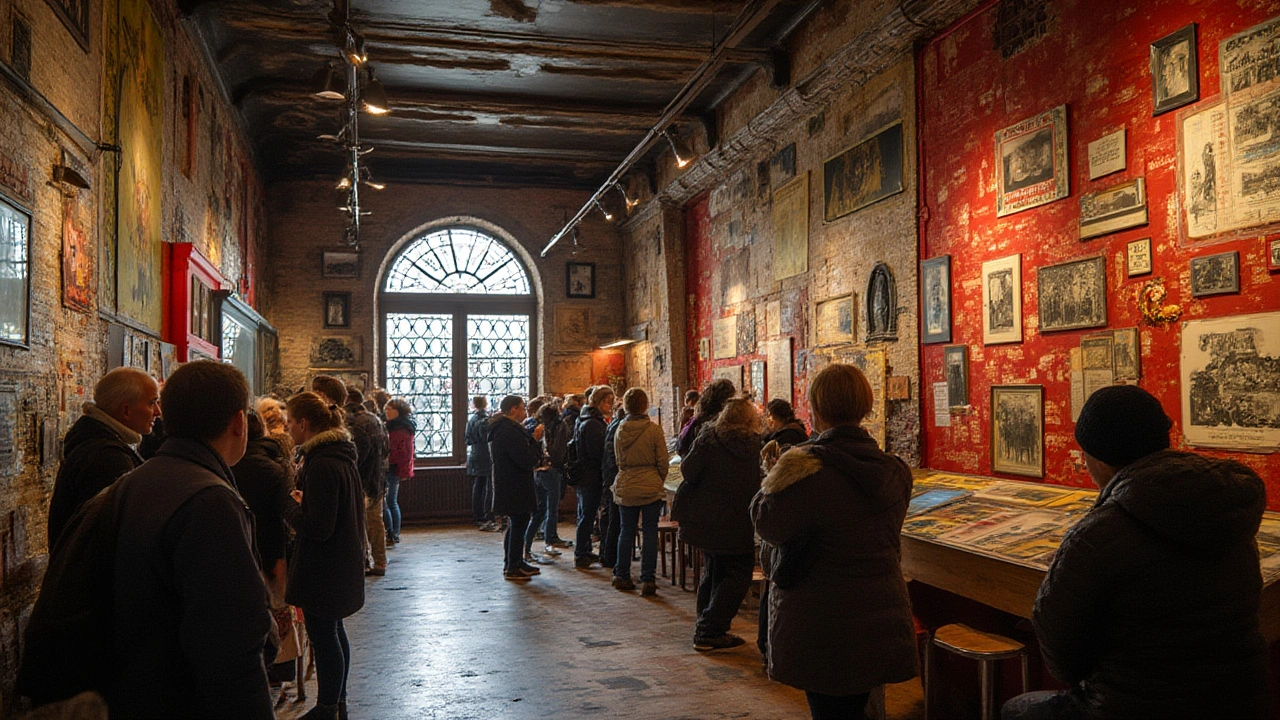
Strange Museums, Public Art, and Hidden Surprises
Every street in De Wallen hides more than you’d guess. Weird museums? Check. There’s the Museum of Prostitution, where you can stand behind glass and hear stories from workers in their own voices. The Hash, Marijuana & Hemp Museum explores Netherlands cannabis culture centuries before it became tourist-fad. Erotic Museum and Sexmuseum Venus Temple pull odd relics and art from all over the world—ancient to modern, vanilla to full-on kink.
But De Wallen’s also got serene corners. Along the canals you’ll stumble on the World’s Smallest House (one room wide), or sculptures like Belle—a tribute to sex workers worldwide. Tiny shops sell specialty cheese, custom clogs, and beautiful Delft porcelain you won’t find in airport duty-free. During winter, the Amsterdam Light Festival transforms the district with glowing installations reflected on the water and the monuments.
The nightlife isn’t just bars. Cabaret shows like Casa Rosso (open since the 1960s) still draw crowds with cheeky humor, while Boom Chicago (nearby in Jordaan) brings English-language satire if raunch isn’t your thing. Pop-up art shows fill vacant shops, and street musicians compete for crowds along the busy Warmoesstraat. Take a guided night walk—many guides grew up here, and their personal stories add reality to the rumors.
- If you love odd facts, here’s one: Dutch law mandates a “window curtain”—the red light glows only when the curtain is open and the worker available. After COVID, more contactless payment options appeared, even in this oldest of businesses.
Practical Tips for Visiting De Wallen
Navigating the Red Light District needs a bit of prep. The neighborhood is busiest Friday and Saturday nights, when the crowd triples. Pickpocketing remains a risk, so don’t flash your phone or wallet. ATMs can have long lines—try to bring cash, but never massive amounts. Stay on the main lanes if the crowds get thick; side alleys can be fun but also confusing for newcomers.
The city keeps security tight—there are hundreds of CCTV cameras and regular patrols. The “We Are Amsterdam” city hosts in red jackets roam the area—you can ask them for info or help in English without worry. To keep the district respectful, the city banned guided window tours as of April 2020, instead promoting tours that focus on history, art, and culture.
The legal drinking age is 18, and “public urination” fines are hefty. Trust me, nobody is joking about that. Most businesses are cashless nowadays, but sex workers prefer cash; come prepared. For a laid-back vibe, try a morning walk—the canals are misty, boats unload fresh produce for the day, and you can snag a photo of streets empty except for market workers and stray cats (my cat Whiskers would fit right in).
Table: Average Prices in De Wallen (2025)
| Item/Service | Average Price (EUR) |
|---|---|
| Bottle of Local Beer | €5 |
| Coffeeshop Pre-Roll | €8-€12 |
| Red Light Window (15 mins) | €50 |
| Museum Entry (Adult) | €12-€15 |
| Guided History Tour | €23 |
Transport is easy—walk from Centraal Station in under 10 minutes, or ride bikes (but stay alert, the narrow lanes fill fast). For families: best to visit after dawn, avoiding party hours. For solo travelers: go with the crowd, trust your instincts, and don’t let nerves keep you from seeing the city up close. De Wallen is a safe, lively cross-section of Amsterdam life, not just a tourist trap.
Final Thoughts: A Place Like No Other
I’ve strolled De Wallen countless times, from showing friends the canals at sunrise to gabbing over fries with Liora on a late Sunday. Every corner, every story changes the picture. Don’t be shy—ask the locals about history, or even about politics (the Dutch always have an opinion). Make time for the unexpected: a random jazz band jamming next to a sex shop, or an old-timer eager to explain the best place for apple pie.
Respect goes a long way here—so does curiosity. Amsterdam’s Red Light District reflects the city’s spirit: open, wild, sometimes blunt, but never dull. It’s this blend of history, grit, and easy laughter that makes De Wallen a place you’ll never forget.

